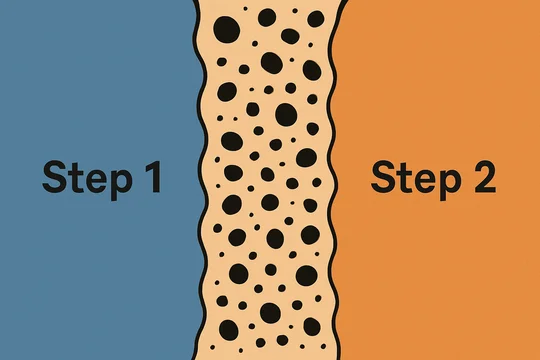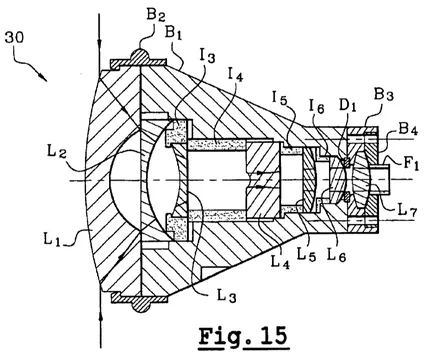
We talked a couple of days ago about how, in Longbeam Technologies LLC v. Amazon.com, Inc., C.A. No. 21-1559-CFC (D. Del.), Chief Judge Connolly stayed the action after raising plaintiff's inadequate disclosures at a § 101 hearing.
But, at the same hearing, plaintiff actually prevailed on the § 101 motion—and Chief Judge Connolly made some notable comments about how the Federal Circuit has responded to his previous § 101 decisions, and what that means for cases going forward.
Case 1, Universal Secure: Affirmed
The first case, Universal Secure Registry LLC v. Apple Inc., C.A. No. 17-585-CFC-SRF (D. Del.), involved four patents asserted against Apple's Apple Pay system. The patents related to methods of authentication for payment system users.
In Universal Secure, Chief Judge Connolly declined to adopt Judge Fallon's R&R denying a § 101 motion to dismiss, and instead granted the motion as to all four patents. He found that all four were directed to the abstract idea of "the secure verification of a person's identity," similar to patents found abstract by the Federal Circuit in Prism Techs. LLC v. T-Mobile USA, Inc., 696 F. App'x 1014 (Fed. Cir. 2017).
He also found that none of the claims included an inventive concept, in part because the specifications recognized that the techniques used were conventional. D.I. 167 at 9-17.
On appeal, the Federal Circuit affirmed as to all four patents. It agreed that they are analogous to the earlier Prism case, that they are directed to abstract ideas, and that the purported "inventive concepts" were recognized as conventional in the specifications.
Case 2, CosmoKey: Reversed
The second case started similarly. In CosmoKey Solutions GmbH & Co. KG v. Duo Security, Inc., C.A. No. 18-1477-CFC (D. Del.), plaintiff asserted a single patent against Duo Security, makers of a two-factor authentication system.
Chief Judge Connolly granted judgment on the pleadings that the patent was invalid under § 101. Just like in Universal Secure, he analogized it to Prism and found that its claims were directed to the abstract idea of "verifying identity to permit access to transactions."
And, like in Universal Secure, the Court found no inventive concept because the specification recognized that the techniques claimed were conventional.
On appeal this time, however, the Federal Circuit reversed. It actually skipped step 1 of the Alice analysis (sparking criticism in a concurring opinion) and held that the claims disclosed an inventive concept under step 2.
Specifically, it found that the specification did not admit that the claimed steps were conventional, and that the claims were "more specific" than prior cases and have an inventive concept because the claimed steps "go beyond the abstract idea."
Spot the Difference
In Universal Secure, the Federal Circuit affirmed and found no eligibility because the patent did not disclose an inventive concept. For example, this alleged inventive concept was "not sufficiently specific":
authenticating a user based on secret information, authenticating the user based on a first biometric information, and generating one or more signals including first authentication information, an indicator of biometric authentication of the user of the first device, and a time varying value to send to a second device, where that second device will then generate an enablement signal based on the biometric authentication, the first authentication information, and second authentication information.
In CosmoKey, the Federal Circuit reversed and found eligibility because the patent did disclose a sufficiently "specific" inventive concept:
ensuring that [an] authentication function is normally inactive, activating only for a transaction, communicating the activation within a certain time window, and thereafter ensuring that the authentication function is automatically deactivated.
If you can deduce and describe a generally-applicable principle to easily distinguish these two inventive concepts, then you win this week's "Federal Circuit whisperer" award. I don't see one.
Case 3, Longbeam: Sorry, You're Going to Trial
So, with all of that background, here is what Chief Judge Connolly said last week at the Longbeam § 101 hearing. Longbeam involves yet more claims relating to access control, and the Court described its thoughts on reconciling Universal Secure and CosmoKey:
THE COURT: . . . Can you reconcile Universal Secure and CosmoKey Solutions?
[Counsel tries to reconcile the cases]
THE COURT: All right. Here's what I'm going to do. First of all, I want to commend you for trying. I mean, I can't reconcile the two cases.
[Defendant's Counsel] MR. BELL: It is challenging, Your Honor.
THE COURT: They are written by the same person.
MR. BELL: Yes, Your Honor.
THE COURT: And I think Universal Secure is right, and it's a unanimous decision. CosmoKey comes after it. I don't think it's right. It's authored by the same principle author, but there's a split panel. I don't think it's right, and I don't think it's reconcilable.
And as a District Court judge, I don't have the time to try to figure out how to reconcile it. And I think you did an admirable job at trying, but I don't think it's possible.
D.I. 27, at 27:9-10, 29:13-30:4. The Court then noted that the irreconcilability of the cases caused a practical problem of potential wasted resources for both the parties and the Court:
THE COURT: And as a practical matter, what it tells me is I could try to write another opinion, like I did in Universal Secure, and I might get the right panel, might get affirmed, or, you know, I could write the same opinion that I thought I wrote in both cases, and I get reversed.
Now, one of the judges, who's on the majority opinion, is no longer on the Court, but I'm still -- I think it's rolling the dice. And I've decided I'm going to pick my spots, and it's . . . purely practical. It is not principled, which I'm embarrassed, in a way, to say.
But, I mean, it's not principled, in terms of trying to decipher the law, but it's actually principled in trying to do justice in the cases and be efficient. Because, why decide in your favor at this stage, only to have this thing come back. You'll have expended your clients' resources, and I'll have expended precious judicial resources down here. It's totally inefficient, but it's the system that our Court has to operate within.
Id. at 30:6-24. With that, the Court denied the motion at the pleading stage, leaving the issue for later in the case—but also suggesting that the defendant should get some leeway in setting the case schedule:
So I'm going to deny your motion, not on principled grounds. What I am going to do, though, is -- and maybe it's going to start with discovery when it comes to the jurisdictional issues that I think had been raised by the failure of the plaintiff to abide by two standing -- or at least one standing order.
I'm going to really defer to the defendant in scheduling this case, both in terms of figuring out what's a fair trial date and in figuring out a manner by which this case should proceed.
So I'm going to welcome, from particularly the defendant, essentially, you know, innovative ways to fairly adjudicate a case like this when a District Court is faced with this situation.
And by "this situation," I mean the Supreme Court has clearly directed courts to consider these 101 issues at the pleading stage. And yet from a District Court's vantage point when you're faced with the two decisions we've been discussing, it's impossible to fulfill that directive from the Supreme Court in a fair way.
So I'm going to deny the motion for those reasons. . . . [A]nd I'm going to be openminded about how to appropriately manage this case going forward.
Id. at 30:25-32:3. The defendant then took one last shot at getting early resolution, and the Court described what is still the "dangerous, uncharted water" of deciding § 101 factual disputes prior to trial:
MR. BELL: We will endeavor to do that, Your Honor. And if it would be amenable to the Court, we would try to come up with creative ways to, perhaps, tee this issue up in a way that the Court would feel comfortable deciding it sooner rather than later.
Because we do think that in the interest of, you know, judicial economy and the parties' economy, there is value -- and the Supreme Court and the Federal Circuit said there's value in resolving this, even if it's ultimately a bit of a role of the dice, more perhaps saved by resolving it sooner rather than later at that risk than going all the way through the trial and putting the parties through that.
THE COURT: So that's true. But I think there, you're getting into some dangerous, uncharted water as well.
I think there are some Federal Circuit judges who would say that this only could be resolved by a jury if there's a factual dispute. I think there are others that would say, and I think the indefiniteness opinions of the Federal Circuit would say that I, as a judge, could make the fact finding necessary to adjudicate 101 motion.
So I hear you, and I'm open. I'm open. I do think we need to do something about these patents.
All right. So, Plaintiff, you've won. I'm denying the motions for the reasons I've articulated.
Id. at 32:4-33:4.
What's Next?
If Longbeam goes forward, we'll most likely see competing proposals from the parties on how to resolve the issue.
My guess is that plaintiff will propose an ordinary schedule, while defendant will propose an early summary judgment motion on § 101.
I think defendant will have an uphill battle to show how an early SJ motion would be anything but a repeat of its previous § 101 motion (likely with potentially-self-serving expert declarations). The fundamental issue here seems to be a legal conflict, not a factual one. It's not obvious to me how addressing this in a summary judgment context rather than as a motion to dismiss context would help—but the Court may see things differently.
It seems to me that the more likely alternative is trial, and a bench decision on § 101, perhaps informed by a special jury verdict.
Would this case ever make it all the way to trial and a decision on § 101, setting up Universal Control vs. CosmoKey round 2 at the Federal Circuit? That seems less than certain with this kind of NPE plaintiff. But you never know.
And, as things stand, we may never find out. After the § 101 hearing, the case was otherwise stayed pending discovery relating to who controls the plaintiff entity.
If you enjoyed this post, consider subscribing to receive free e-mail updates about new posts.






